|
Christmas Tree CandlesBefore 1900 in America, electrically
lighting a Christmas tree was practically unheard of. Most families in
America did not light their trees at all, while a few in the larger cities
used candles or glass candle cups (also called Fairy Lights). A brightly
painted red bucket of sand (or sometimes water) was always kept by the
tree for the inevitable fire emergency, and many candlelit trees also
sported a "Christmas rug" under the tree, (the forerunner of today's tree
skirt), to keep wax drippings off of the floor. Even with the prosperity
of the Roaring Twenties, lighting a Christmas tree, whether electrically
or with candles, was not truly common. While the lighting tradition grew
well in the 20s and 30s, it would not actually be until the years after
World War II that a lighted Christmas tree in American homes would be
considered universal.
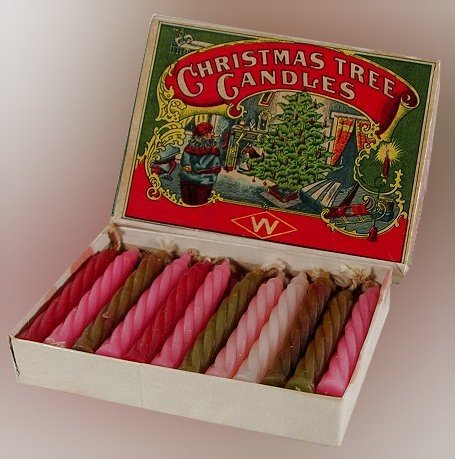 |
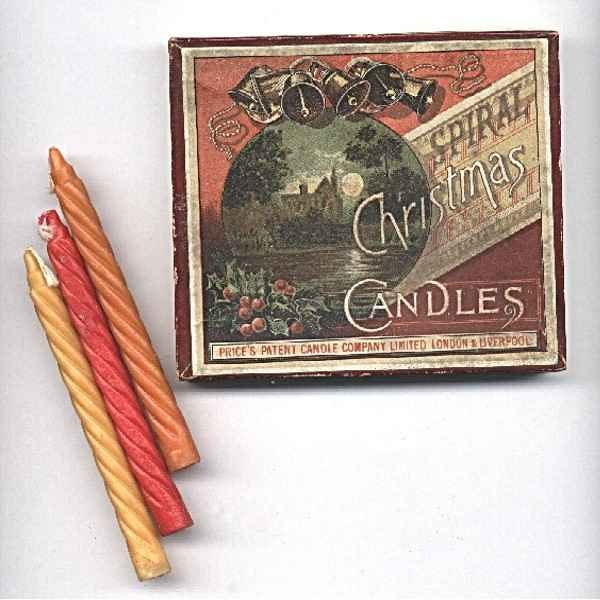 |
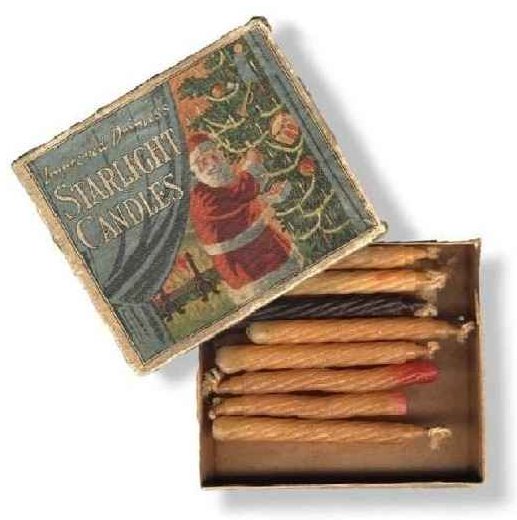 |
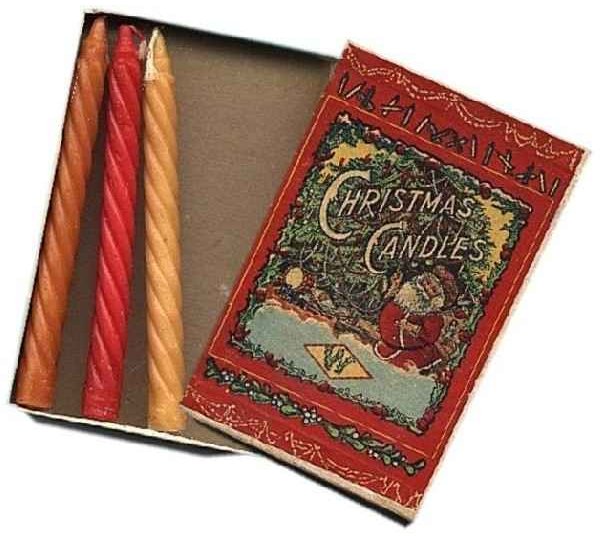 |
| Four examples of early 1900s Christmas tree
candles |
Fairy Lights
Although these lights weren't made specifically for Christmas trees, many of them saw service that way. These units held water and cooking oil, and the
wick device was floated on top. When lit, these
lights give a beautiful, sparkling effect in a darkened room. Other common uses of these
delightful lights were as welcoming beacons on walkways and porches,
window or mantle lights. In addition to the use of oil and water, some
people used small candles, similar to the votive candles we use today.
Other popular names for these lights are "Fairy Lights" and "Candle
Cups"
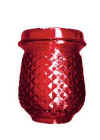 |
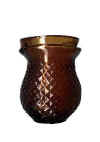 |
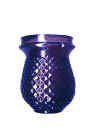 |
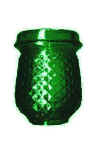 |
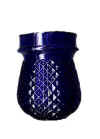 |
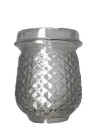 |
| Ruby |
Amber |
Purple |
Green |
Cobalt |
Clear |
Below
is a German made floating wick kit for
use with the
Christmas Lights
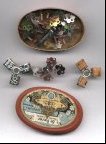
Please contact us if you have any images of these products that could be posted here.
Christmas Tree Candle Holders
|
From Germany, this
counterweighted candle holder has the added feature of the matched
pair of Lovebirds gripping the candle with their beaks. Exceedingly
rare, this unit dates to about 1880 and is made of stamped tin and
lead. |

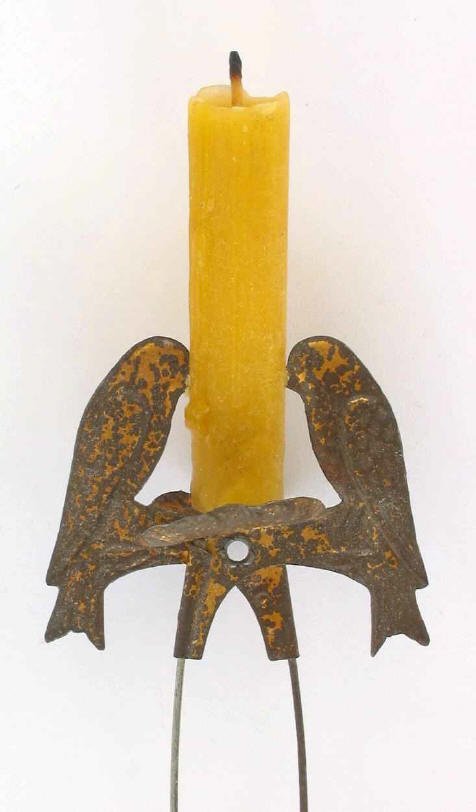
|
| Three examples of
beautiful counterweighted or "pendulum" candle holders. All three
are of German origin and are rare examples of the art. they were
intended for the smaller, table top sized trees so popular in the
mid-to-late 1800s. |
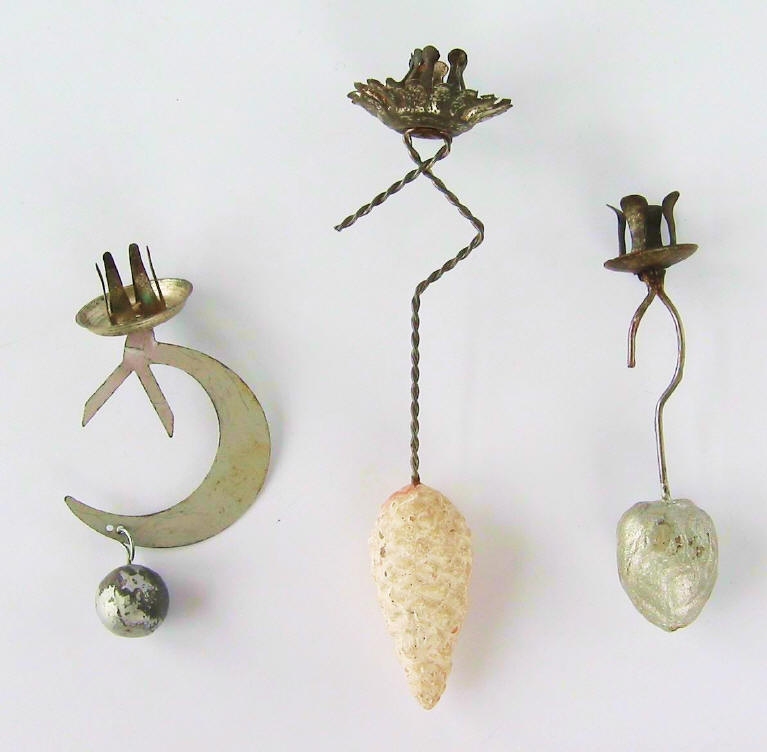
|
| Beautiful and
exceedingly delicate, free blown glass candleholders like this one
rarely survive intact. This example is blown in the form of a lily
flower, and has survived the years quite well. |
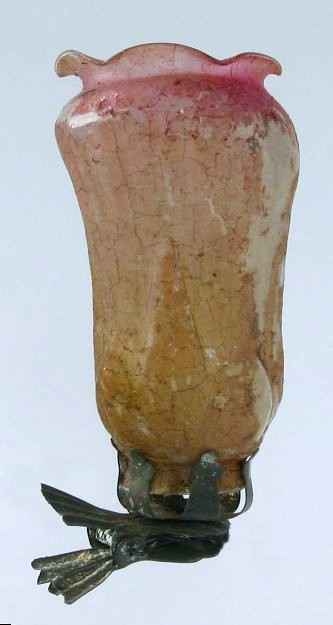
|
|
A Christmas
Lantern, manufactured in 1871 of tin and colored glass. The outer
glass shell slides up to facilitate the lighting of the taper
within. These were used in the same way that the
glass candle cups were-- either hung on trees or used on walkways
and porches. |

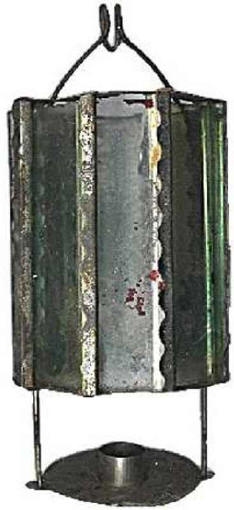 |
|
Top and bottom views of
an unusual and rare German "bough clip", dated 1876. It was designed
to hold the candle out and away from the tree needles. It was not a
successful invention, however, as the method used to hold the candle
to the device was simply a spike which was to be inserted into the
base. With the tapers being so small, the spike often cracked or
split the candle at the base, making it useless. These clips were
marketed for only two years.
UPDATE: The author
recently received a kind note from Mr. Edmund Watts, who provided
the following information about this type of candle holder. Mr.
Watts writes:
My Grandfather, who was born
in 1895, remembered the old Christmas candles and the troubles
associated with them. Every two or three years there would be
a little fire on the tree, and it was always quickly extinguished;
that was the original reason for requiring a really fresh
tree. They used those little saucers with spikes to affix the
candles to the tree, but the proper use was to light one of the
candles and use its flame to heat the spikes so that they would slip
easily into the bases of the candles; very few were lost to breakage
or splitting.
The author kindly thanks
Mr. Watts. It is through efforts like his that this web site
continues to grow. |
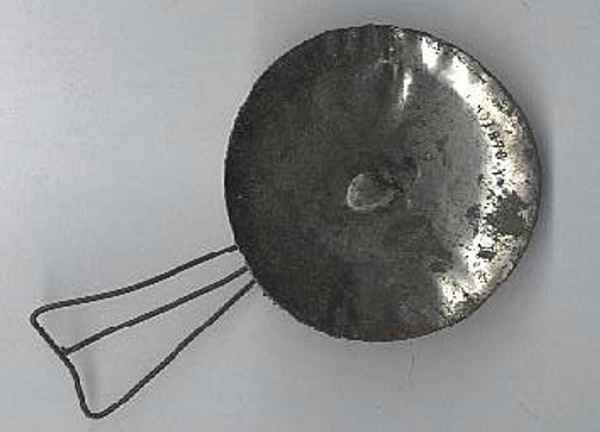
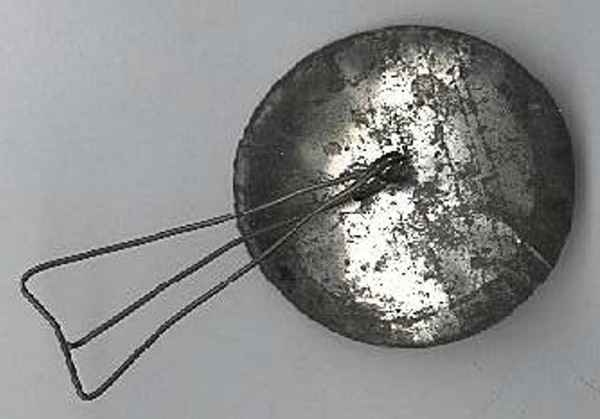 |
|
Web site visitor Eric H.
wrote to me, sharing these wonderful chiming candle holders. Eric
reports that single candle-powered whirligigs like the ones pictured
here "were designed to hang on individual branches, variants on the
old counter-weighted candle holders".
Eric has an extensive
collection of these wonderful old devices, spanning the years from
1900 through about 1980. To see a brief explanation of these, click here. |
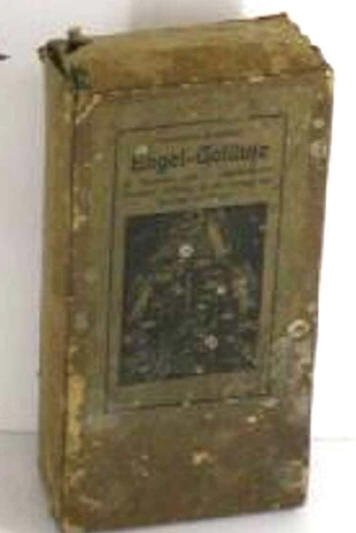
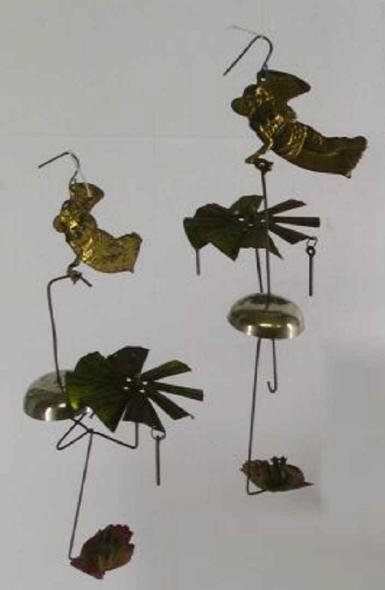
|
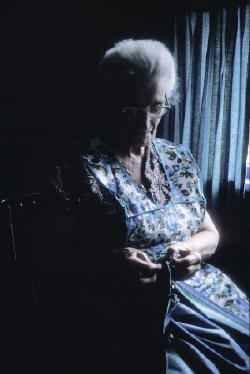 |
| "Mertie," 98 years
young |
George Nelson once had occasion to chat
with Mrs. Myrtle Chadsworth, a wonderful woman 98 years young at the time. 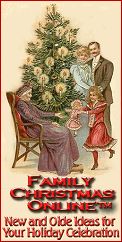 Her vivid blue eyes sparkled as she remembered her childhood Christmases,
and the traditional lighting of the candles early Christmas morn'. She
reports that it was an exciting affair. Myrtie, (as she was called by her
family), and her three sisters would be kept busy in another room by their
oldest brother while Mother and Father would stand on each side of the /a>
tree, lighting the candles quickly from top to bottom. As the last taper
was lit, the children would be invited into the room to share in the
wonderment of the glowing tree. Sadly, the candles would only be allowed
burn for a precious few minutes, and all too soon it would be time to blow
them out. She remembers that, as the youngest child, Father would pick her
up for the honor of blowing out the last and uppermost candle. Myrtie said
that some families, hers included, would visit the tree again for a
re-lighting ceremony late in the evening, when they would gather once more
to make private Holiday wishes for the upcoming New Year around the
glowing tree. The Chadsworth family lit their tree with candles until
1921, when her father brought home a set of sixteen electric lights in a
holly-covered box one Christmas Eve. Myrtie's eyes sparkled again as she
remembered that Christmas, when she had the honor of turning on the table
lamp to which the lights were connected. "The room and tree lit up in a
rainbow of colors," she remembers. "And I can still in my mind smell the
unusual odor the colored lamps gave off as they warmed up that first
year." Myrtie said that the best thing about the new lights was that the
family could leave them turned on all evening.
Her vivid blue eyes sparkled as she remembered her childhood Christmases,
and the traditional lighting of the candles early Christmas morn'. She
reports that it was an exciting affair. Myrtie, (as she was called by her
family), and her three sisters would be kept busy in another room by their
oldest brother while Mother and Father would stand on each side of the /a>
tree, lighting the candles quickly from top to bottom. As the last taper
was lit, the children would be invited into the room to share in the
wonderment of the glowing tree. Sadly, the candles would only be allowed
burn for a precious few minutes, and all too soon it would be time to blow
them out. She remembers that, as the youngest child, Father would pick her
up for the honor of blowing out the last and uppermost candle. Myrtie said
that some families, hers included, would visit the tree again for a
re-lighting ceremony late in the evening, when they would gather once more
to make private Holiday wishes for the upcoming New Year around the
glowing tree. The Chadsworth family lit their tree with candles until
1921, when her father brought home a set of sixteen electric lights in a
holly-covered box one Christmas Eve. Myrtie's eyes sparkled again as she
remembered that Christmas, when she had the honor of turning on the table
lamp to which the lights were connected. "The room and tree lit up in a
rainbow of colors," she remembers. "And I can still in my mind smell the
unusual odor the colored lamps gave off as they warmed up that first
year." Myrtie said that the best thing about the new lights was that the
family could leave them turned on all evening.
|

































